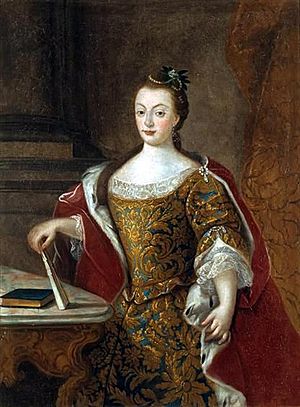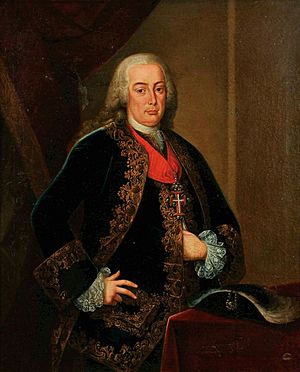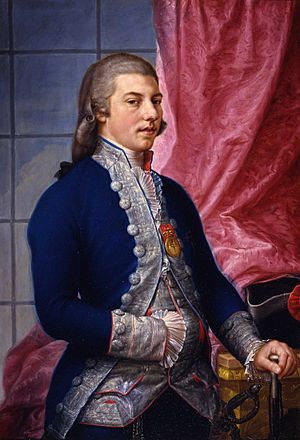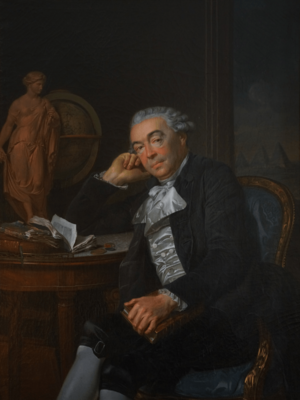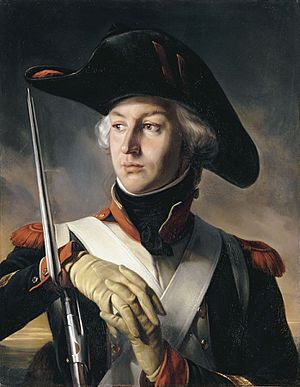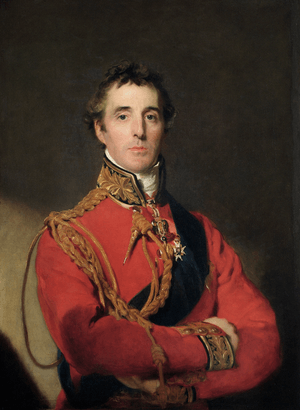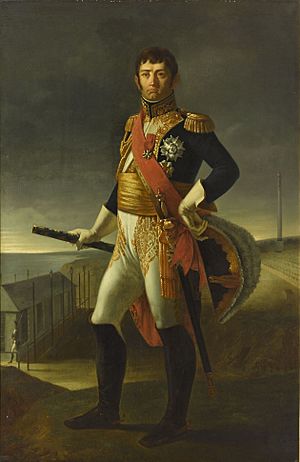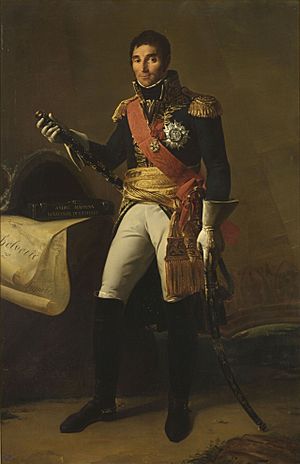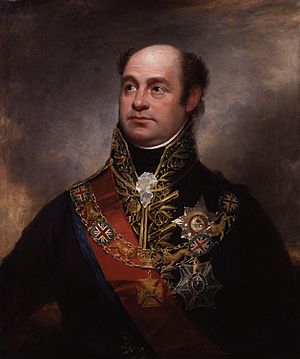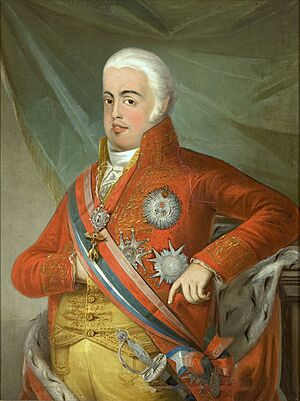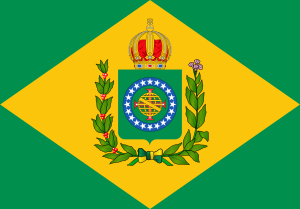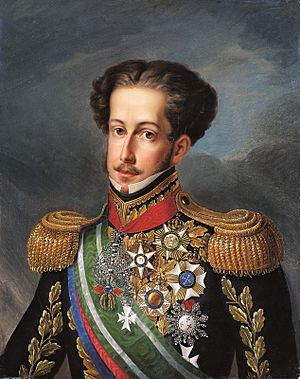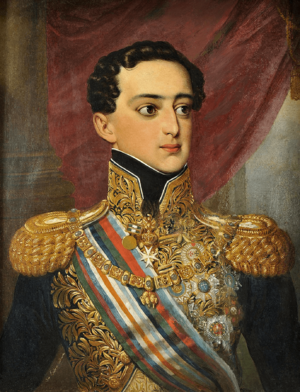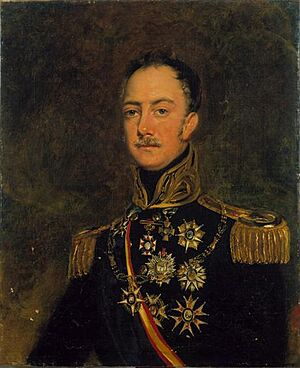History of Portugal (1777–1834) facts for kids
Quick facts for kids
Kingdom of Portugal and the Algarves
Reino de Portugal e dos Algarves (Portuguese)
|
|||||||||
|---|---|---|---|---|---|---|---|---|---|
| 1777–1834 | |||||||||
|
|
|||||||||
|
Anthem:
|
|||||||||
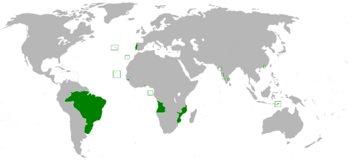
The Second Portuguese Empire in 1800
|
|||||||||
| Capital |
|
||||||||
| Common languages | Portuguese | ||||||||
| Religion | Roman Catholic | ||||||||
| Government |
|
||||||||
| Monarch | |||||||||
| History | |||||||||
| 1777 | |||||||||
| 1807–1814 | |||||||||
| 1822 | |||||||||
|
• Concession of Evoramonte
|
1834 | ||||||||
| Currency | Portuguese real | ||||||||
| ISO 3166 code | PT | ||||||||
|
|||||||||
The history of the Kingdom of Portugal and the Algarves from 1777 to 1834 was a time of big changes. It started with Queen Maria I taking the throne. This period saw the end of the absolute monarchy, where the king had all the power. Portugal then became a constitutional monarchy, meaning the king's power was limited by a constitution.
During this time, Napoleon invaded Portugal in 1807. This led the royal family to move to Brazil. Later, Brazil declared its independence in 1822. Portugal also went through a civil war between those who wanted an absolute monarchy and those who wanted a constitutional government. In the end, the constitutional side won.
Contents
Portugal's Shift to a Constitutional Monarchy
Queen Maria I's Early Reign
When King Joseph died in 1777, his eldest daughter, Princess Maria Francisca, became Queen Maria I. She was the first queen to rule Portugal. The country was still recovering from the big 1755 Lisbon earthquake.
Before becoming queen, Princess Maria didn't like her father's powerful Prime Minister, the Marquis of Pombal. He had been the real ruler for 27 years. As soon as Maria became queen, she quickly fired him and sent him away. She brought back some privileges for the nobles and clergy. She also released many people Pombal had imprisoned.
Portugal's economy was doing well during this time. They sold a lot of wine and bought fewer goods from Britain. This period also saw new buildings like the Palace at Queluz and the Estrela Basilica.
The French Revolution's Impact
In 1789, the French Revolution caused big changes across Europe. Portugal sent soldiers to fight the French in the Pyrenees in 1794. But the war didn't go well. By 1795, Spain made peace with France and became its ally.
Portugal was divided. Some people wanted to stay allied with Britain, while others, like the "French Party," admired the French Revolution. They hoped it would bring liberal changes to Europe.
Around this time, Queen Maria began to show signs of mental illness. After 1799, her son, John of Braganza, became the Prince-Regent. This meant he ruled in her place.
The Continental Blockade and Portugal's Neutrality
Prince-Regent John VI tried to keep Portugal neutral in European conflicts. This was hard because France wanted to stop trade with Britain, Portugal's old ally. This was called the Continental Blockade. Portugal's merchants wanted peace so they could keep trading.
Spain, now allied with France, pressured Portugal to join the blockade. France wanted to close Portuguese ports to British ships.
The War of the Oranges
In 1801, Spain and France gave Portugal an ultimatum. Portugal had to choose between them and Britain. They demanded Portugal:
- End its alliance with Britain and close its ports to British ships.
- Open its ports to French and Spanish ships.
- Give up some land as a guarantee.
- Pay money to France and Spain.
- Review its border with Spain.
If Portugal refused, Spain would invade with French support. Portugal's army was small and not well-trained. Spain, led by Manuel de Godoy, had about 30,000 soldiers.
On May 20, Godoy's army entered Portugal. They quickly took several towns in the south. The city of Elvas managed to resist a siege.
The war ended quickly with the Treaty of Badajoz on June 6, 1801. Portugal lost Olivença and some other areas to Spain. Portugal also had to pay France a large sum of money.
Napoleon's Invasions of Portugal
In 1806, Napoleon decided Portugal was stopping his plans for Europe. He again ordered Portugal to close its ports to British ships.
On October 27, 1807, France and Spain secretly agreed to divide Portugal. Parts of Portugal would go to Spain and France. Portugal's colonies, like Brazil, would also be split.
On November 19, 1807, French troops led by General Jean-Andoche Junot entered Portugal. Napoleon had ordered the invasion.
The Royal Family Flees to Brazil
On November 27, 1807, the Prince-Regent, the Queen, and the entire royal family, along with many nobles and servants, boarded ships in Lisbon. They were escorted by British ships. About 10,000 people moved to Brazil, a Portuguese colony. The capital of the Portuguese Empire was then set up in Rio de Janeiro.
First French Invasion
General Junot's troops reached Lisbon in late November, just a day after the royal family left. The Prince-Regent had left orders for the Portuguese leaders to welcome the French peacefully. Junot claimed he came to free the Portuguese people.
However, Junot soon removed symbols of the Portuguese monarchy. He declared that the royal family no longer ruled Portugal. He also took money from the Portuguese treasury to pay France.
In 1808, Napoleon made his brother Joseph Bonaparte King of Spain. This caused a rebellion in Spain. The Portuguese also rose up against the French, but their revolts were put down.
Later that year, a British force led by Arthur Wellesley (who later became the Duke of Wellington) arrived in Portugal. The British-Portuguese forces defeated the French at the Battle of Roliça and the Battle of Vimeiro. The Convention of Sintra was signed, allowing the French troops to leave Portugal safely. This gave the British and Portuguese control of Lisbon.
Second French Invasion
Napoleon sent Marshal Jean-de-Dieu Soult to invade Portugal again. British forces, led by John Moore, entered northern Portugal but were defeated. The French then occupied northern Portugal and took Oporto in March 1809.
This time, farmers and common people strongly resisted the French. They fought bravely against the invaders.
Wellesley, leading British-Portuguese forces, again expelled the French from northern Portugal. He was helped by William Carr Beresford and a stronger Portuguese army. They defeated Soult at the Second Battle of Porto and forced the French to retreat to Spain. Wellesley then moved his forces to defend against a possible third invasion.
Third French Invasion
The third and final French invasion of Portugal was led by Marshal André Massena. His army of 62,000 men entered Portugal in August. They quickly defeated the defenders at Almeida and marched towards Lisbon.
Wellesley's forces withdrew to strong defenses called the Lines of Torres Vedras. These were 152 forts north of Lisbon, built by Portuguese workers and defended by 40,000 Portuguese soldiers. Massena's forces reached these lines in October but could not break through.
Massena's army ran low on supplies and was forced to retreat in April 1811. The French were defeated in several smaller battles as they left Portugal. By March 1814, the Peninsular War ended with a final victory in France.
The war caused great suffering in Portugal. Many towns were looted, and there was famine. The instability also led to independence movements in Spanish colonies in America, which affected Brazil.
The Liberal Revolution in Portugal
From 1808 to 1821, Portugal was like a British protectorate and a colony of Brazil. This was because the Portuguese King stayed in Rio de Janeiro. This situation caused economic and social problems in mainland Portugal. The country was managed by British military leaders, especially William Beresford.
During this time, Brazil saw many improvements. New factories were built, and trade was encouraged. The Bank of Brazil was created. These changes helped Brazil but hurt Portugal's economy.
In December 1815, King John declared the United Kingdom of Portugal, Brazil and the Algarves. This made Brazil equally important as Portugal.
The 1820 Revolution
By 1820, Portugal was in a crisis. People were unhappy with the absolute government and the British rule. They were inspired by the American and French revolutions.
In Spain, a liberal Constitution had been approved during the Napoleonic wars. This inspired a group of middle-class people in Porto. They formed a secret group called the Sinédrio to discuss political changes.
On August 24, 1820, soldiers in Porto started a revolution. They wanted a provisional government and a new Constitution. The government in Lisbon soon joined the movement.
William Beresford's administration was replaced by a new government. A special assembly was called to write a new Constitution. This assembly was made up of educated people who wanted big changes. They ended censorship and the Portuguese Inquisition.
On April 26, 1821, King John VI returned to Lisbon. He arrived on July 3. He left his son, Prince Pedro, as regent in Brazil.
Brazil's Independence
In Brazil, many people wanted independence. Brazil was prosperous, but a large part of its population were slaves. The main question was whether Brazil would return to being a colony or become independent.
In September 1821, the Portuguese assembly voted to make Brazil a colony again. They ordered Prince Pedro to return to Europe. But the people in Brazil asked him to stay. Pedro decided to remain in Brazil.
Pedro formed a new government. He made changes like cutting taxes and protecting private property. He also sent elected representatives to the Portuguese assembly.
Pedro defied the Portuguese assembly's orders. Portuguese troops in Brazil rioted, but Pedro ordered them to leave. In February 1822, Brazilians in Bahia revolted against Portuguese forces.
Pedro traveled around Brazil to gain support. He was proclaimed the "Perpetual Defender of Brazil." He also called for an assembly to write a Brazilian constitution.
In September 1822, Pedro received news that the Portuguese assembly had called his government traitorous. He had to choose between returning to Portugal or declaring independence. On September 7, 1822, by the Ipiranga River, he famously declared: "By my blood, by my honor, and by God: I will make Brazil free." This moment marked Brazil's independence.
The Return of Absolutism
King John VI became king after his older brother died. He was not very interested in politics at first. But he became prince regent when his mother, Queen Maria I, became ill. In 1816, he became king while living in Brazil.
When he returned to Portugal in 1821, the country was unstable. He had to rule under a new constitutional monarchy. There were big disagreements between the royal court and the new government.
The Vilafrancada Revolt
In 1823, events in Spain influenced Portugal. Pro-monarchy forces, led by Queen Carlota Joaquina de Borbón, wanted to bring back absolute rule. The queen was very conservative and disliked her husband's policies.
Prince Miguel, the king's son, shared his mother's views. On May 27, 1823, he led a revolt against the liberal constitution. Soldiers from Lisbon joined him. They declared absolutism in Vila Franca de Xira.
The king responded by suspending the 1822 Constitution. He promised a new law to protect people's rights. This revolt was called the Vilafrancada. Queen Carlota and Miguel wanted King John to give up his throne. The king eventually accepted absolutism.
The Abrilada Uprising
In Portugal, those against the constitution were divided. King John relied on the moderate group. But Queen Carlota supported the radical absolutists. They wanted absolute rule with no compromises.
In 1823, a plot led by Queen Carlota and Prince Miguel was uncovered. They planned to force the king to give up his throne. On April 30, Miguel imprisoned many ministers and kept his father, the king, isolated in the Bemposta Palace. This second attempt to remove the king was called the Abrilada.
British and French ambassadors helped King John. They got him onto a British warship. There, he learned what had happened. He then dismissed Miguel from his army command and sent him into exile. King John returned to his palace and brought back the liberal government.
Another plot was found later that year. The queen was exiled to Queluz.
King John promoted arts, trade, and farming. But the political troubles and Brazil's independence made him unhappy. He died in 1826. Before he died, he recognized Brazil's independence. He also restored his son Pedro's right to the Portuguese throne.
Towards Civil War
King John VI's death caused a crisis. His rightful heir, Prince Pedro, was the Emperor of Brazil. Some people believed Pedro had lost his right to the Portuguese throne because Brazil was now a separate country.
Pedro accepted the Portuguese throne as King Pedro IV in March 1826. But in Brazil, people didn't want to return to being a colony of Portugal. The Brazilian constitution also said the Emperor couldn't rule another country.
Pedro had to choose between Portugal and Brazil. He decided to give up the Portuguese throne in May 1826. He gave it to his seven-year-old daughter, Princess Maria da Glória. This was conditional: Portugal had to get a new constitution, the 1826 Charter. Also, his brother Miguel, who was in exile, had to marry Princess Maria when she was older.
The 1826 Charter was not popular with everyone. Those who wanted an absolute monarchy didn't like it. But even some liberals didn't fully support it because it was imposed by the king.
Miguel I Becomes King
In 1828, Prince Miguel returned from Austria. He became regent, replacing his sick sister. Over the next few months, nobles, clergy, and many common people declared Miguel King of Portugal. They called him Miguel I.
They also canceled the liberal Constitution. Liberals and their supporters were persecuted. Thousands were killed, arrested, or forced to flee. Miguel tried to get international support, but Britain opposed him.
These events led to the Liberal Wars. This was a civil war between supporters of absolutism, led by Miguel, and supporters of liberalism. A liberal uprising in Porto was quickly defeated by Miguel's forces. Only the Azores remained under liberal control.
The Portuguese Civil War
The political situation changed in 1830. Pedro faced opposition in Brazil and gave up his Brazilian throne to his son, Pedro II, in 1831. He then returned to Europe.
Pedro gathered money and soldiers to help his daughter regain the Portuguese throne. He went to Terceira in the Azores, where his government-in-exile was. From there, he launched an expedition.
On July 8, 1832, Pedro's forces landed near Porto. Miguel's forces left Porto without a fight. The liberals were then besieged in Porto for a long time.
In June 1833, the liberals sent a force led by the Duke of Terceira to the Algarve. They were supported by a naval fleet. The Duke of Terceira landed in Faro and marched north to take Lisbon on July 24, 1833. Meanwhile, the liberal fleet defeated the absolutist fleet at the Battle of Cape St. Vincent.
The liberals now held Lisbon and Porto. Maria da Glória was proclaimed Queen, and Pedro became regent. He took property from Miguel's supporters and suppressed religious orders.
The war continued in 1834. Miguel's army was defeated at the Battle of Asseiceira. On May 24, 1834, peace was declared. Miguel agreed to give up all claims to the Portuguese throne. He was given a pension and banished from Portugal forever.
Pedro restored the Constitutional Charter. He died soon after, on September 24, 1834. His daughter then became Queen Maria II of Portugal.
See also
 In Spanish: Historia de Portugal (1777-1834) para niños
In Spanish: Historia de Portugal (1777-1834) para niños
- Kingdom of Northern Lusitania, proposed by Napoleon
- Timeline of Portuguese history




